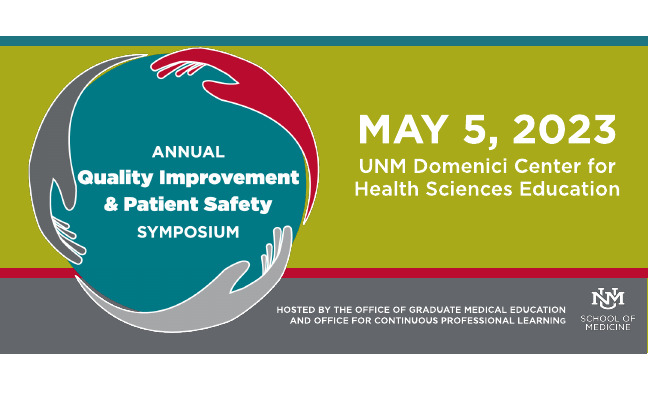Document Type
Poster
Publication Date
5-5-2023
Abstract
BACKGROUND
Regular vision and dental care are important components of healthcare for persons with HIV (PWH). HIV infection is associated with a wide array of complications for both ocular and oral health regardless of severity of HIV disease. Ocular disease can range from opportunistic or associated infections (i.e cytomegalovirus retinitis, ocular syphilis); to inflammatory or degenerative disease (i.e retinal vasculopathy, optic neuropathy), or drug effects. Oral disease similarly encompasses infectious and noninfectious etiologies, including opportunistic infections (i.e., candidiasis, oral hairy leukoplakia), comorbid infections (i.e. herpes simplex virus, human papilloma virus, periodontitis/gingivitis), or inflammatory conditions (i.e. salivary gland disease). The Health Resources and Service Administration (HRSA) HIV/AIDS Bureau (HAB) requires Part C-funded HIV clinics to ensure that all patients have at least annual eye and dental exams to screen for and manage these conditions.
Currently, there is no standardized method for capturing whether patients are meeting these metrics at University of New Mexico Medical Group Truman Health Services (THS). Current practice is for the primary care provider and/or case manager to verbally ask patients about dental and vision care at each clinic appointment. Tracking of outside referrals is challenging since records are infrequently received for these services. For one Infectious Diseases fellow physician at this clinic, only 20% of patients had a documented eye or dental exam within the preceding 1 year based on review of clinic notes.
OBJECTIVES
To devise a standardized form to capture and document whether patients have completed annual eye and dental screening and identify patients in need of referral.
METHODS
Clinic notes for all patients on the Infectious Disease fellow’s panel were reviewed to determine if a vision or dental exam was documented. Criteria for meeting this metric included an approximate last appointment date for either exam between 3/6/22 and 3/6/23. Completed past appointments at the UNM Eye Clinic in this timeframe were also counted toward this number. The UNM Dental Clinic uses a separate EMR, so past appointments at this clinic were not able to be viewed or counted. Patients with notes stating “up to date” or “current” for these exams were not counted as the accuracy of these could not be independently verified.
In order to routinize the gathering of this information and save provider time, a form was developed for patients to fill out during rooming of the patient by the medical assistant. For patients unable to complete the form independently, medical assistants assisted read the questions or interpreter services are utilized. The short form includes fields capturing whether the patient had been seen for vision or dental care in the previous year, name of practitioner or clinic, dates of most recent and upcoming appointments, and information about vision and dental insurance. This form is collected for provider review and inclusion into the clinic note and scanned into the electronic medical record. Providers identify patients in need of screening services and place appropriate referrals. After several months, this patient panel will be reassessed for compliance with the new process.
RESULTS
This intervention is still ongoing, so no results are yet available.
CONCLUSIONS
The goals of this intervention are to more accurately capture patients at THS who have either completed or need vision and dental exams, and to identify patients needing referral for these services. In addition, providers with more accurate assessment of clinical needs can appropriately increase referrals for vision and dental services to maintain compliance with HRSA guidelines.
RESOURCES
Clinical Care Guidelines and Resources | Ryan White HIV/AIDS Program. Accessed March 17, 2023. https://ryanwhite.hrsa.gov/grants/clinical-care-guidelines-resources#clinical-protocols
Johnson C, Cheever LW, Hauck H, Matthews T, Robilotto S, Mofidi M. Ryan White HIV/AIDS Program Oral Health Data Report 2020. https://ryanwhite.hrsa.gov/sites/default/files/ryanwhite/data/hrsa-oral-health-data-report-2020.pdf
Peters RPH, Kestelyn PG, Zierhut M, Kempen JH. The Changing Global Epidemic of HIV and Ocular Disease. Ocular Immunology and Inflammation. 2020;28(7):1007-1014. doi:10.1080/09273948.2020.1751214
Gordon LK, Danesh-Meyer H. Neuro-Ophthalmic Manifestations of HIV Infection. Ocular Immunology and Inflammation. 2020;28(7):1085-1093. doi:10.1080/09273948.2019.1704024
El Howati A, Tappuni A. Systematic review of the changing pattern of the oral manifestations of HIV. Journal of Investigative and Clinical Dentistry. 2018;9(4):e12351. doi:10.1111/jicd.12351
Tappuni AR. The global changing pattern of the oral manifestations of HIV. Oral Diseases. 2020;26(S1):22-27. doi:10.1111/odi.13469
Recommended Citation
Tillery, Kory and Michelle Iandiorio. "Improved Tracking and Referrals for Vision and Dental Care for Patients with HIV." (2023). https://digitalrepository.unm.edu/hsc_qips/78


Comments
Poster Presented at UNM Health Sciences Center Quality Improvement & Patient Safety Symposium 2023